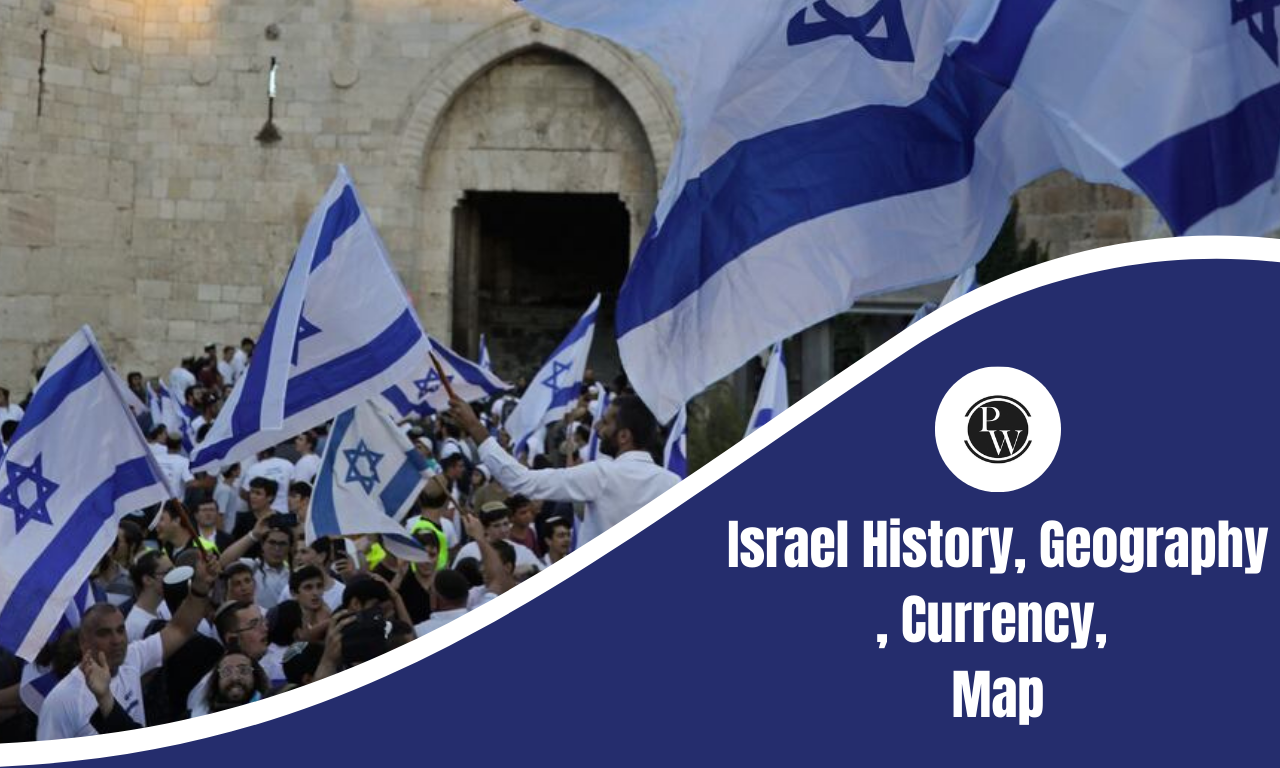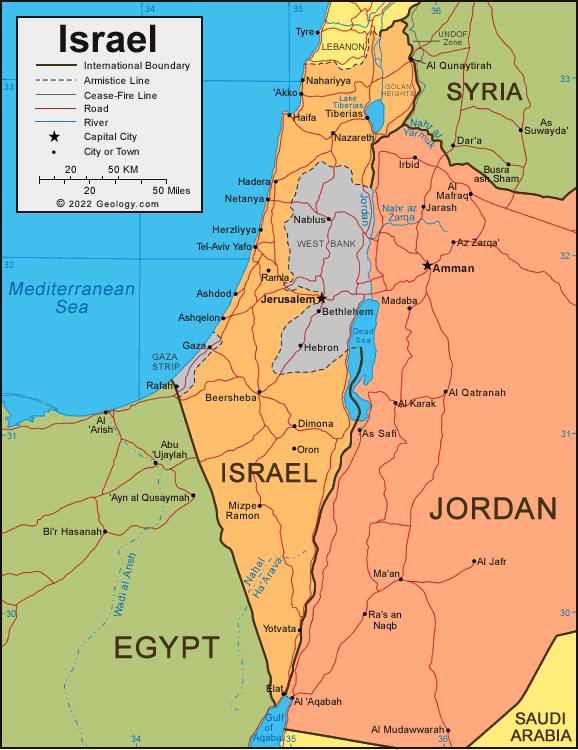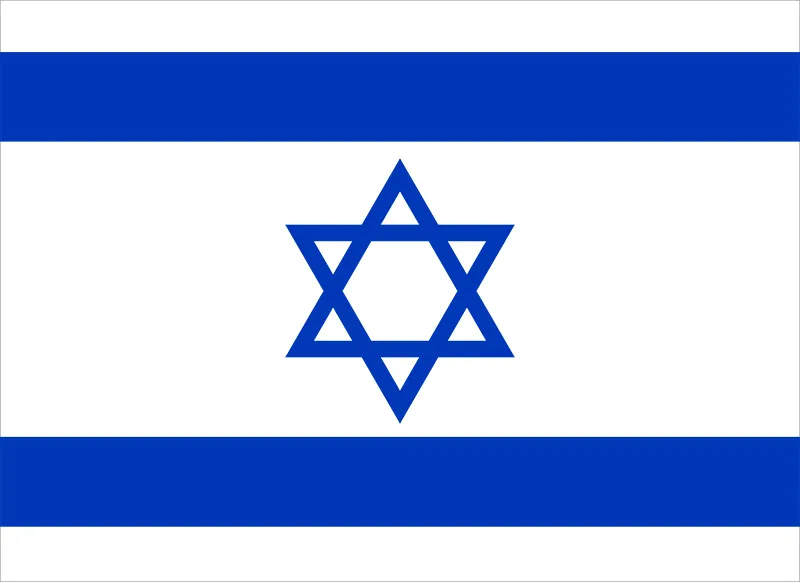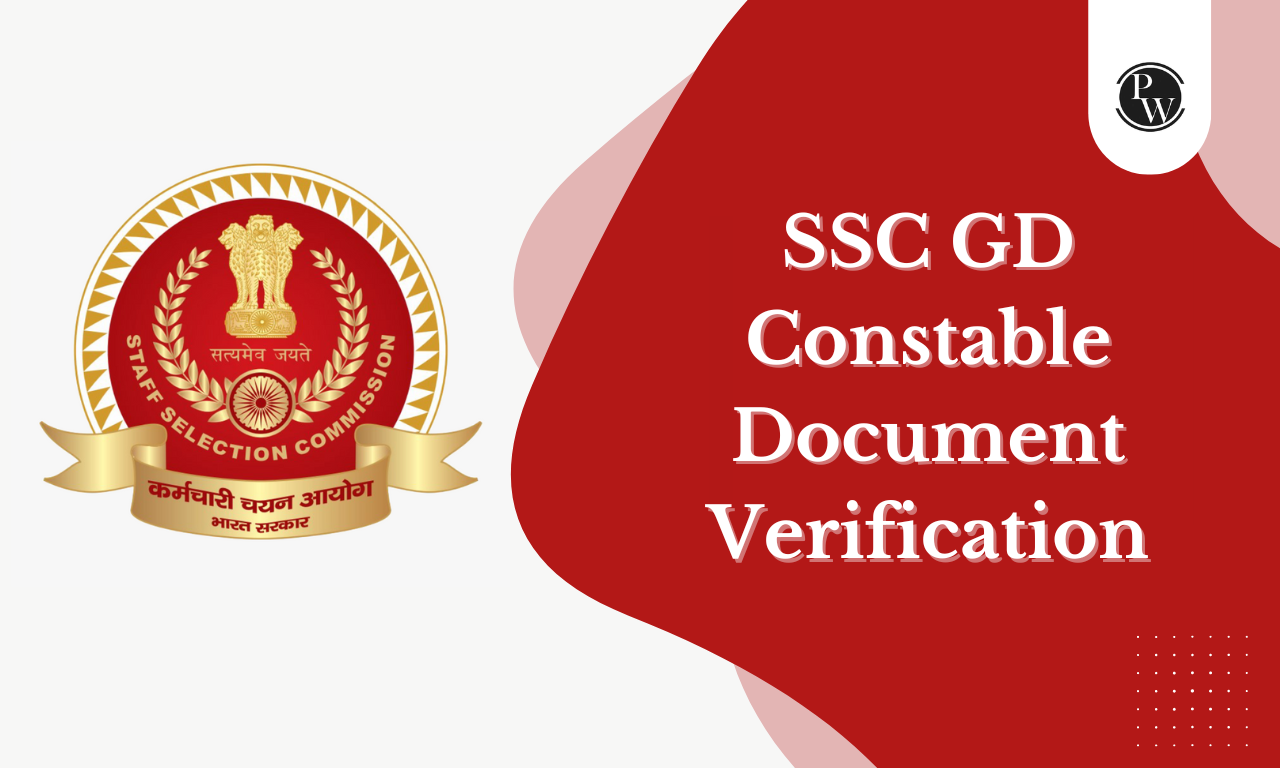

Israel, officially the State of Israel, is a Middle Eastern country on the eastern Mediterranean, bordered by Lebanon, Syria, Jordan, and Egypt. Its capital is Jerusalem, with Tel Aviv as an economic hub.
Founded in 1948, Israel is the world’s only Jewish-majority state. It has long faced disputes with the Palestinians and tensions with some Arab neighbors, though recent agreements have improved ties with countries like the UAE and Morocco.
In 2025, Israel remains a close ally of the United States and a leader in technology and defense, but continues to deal with political instability, security challenges, and unresolved issues over borders and peace.
Why Israel is in News?
Following the bizarre terrorist attack and abduction of several Israelis by Hamas, Israeli airstrikes have left entire neighbourhoods in Gaza, including hospitals, in ruins. The remaining medical facilities and emergency units are struggling to function due to the lack of power and essential resources.
As a result, Gaza is facing a deepening crisis, with over 340,000 individuals displaced as critical supplies become scarce. Israel has declared that it will not lift its "total blockade" until Hamas releases the estimated 100 to 150 individuals held hostage.
The conflict has taken a heavy toll, with at least 1,300 Israelis, including 222 soldiers, losing their lives, and over 3,300 others sustaining injuries. Meanwhile, in Gaza, the death toll has surpassed 1,500 people, with more than 6,200 individuals injured.
Israel-India Relations in 2025
India and Israel share a close partnership in defense, technology, trade, and agriculture. The connection goes back to 1950 when India first recognized Israel, and relations became official in 1992 with embassies in New Delhi and Tel Aviv.
Israel has supported India in times of conflict, providing weapons, intelligence, and technology, especially during the Indo-Pak wars. Today, defense remains the strongest link, with India being one of the largest buyers of Israeli military equipment.
Beyond defense, both countries also work together in cybersecurity, water management, agriculture, and innovation. They are members of the I2U2 group (India, Israel, UAE, and USA), which focuses on cooperation in food security, energy, and technology.
By 2025, India continues to be a key partner for Israel, and their relationship is seen as strategic, practical, and steadily growing stronger.
Israel History and Formation
Israel is the world’s only Jewish-majority nation, with roots going back thousands of years in the land historically known as Canaan, Palestine, and the Holy Land. Over time, it was ruled by the Romans, Byzantines, and later Islamic empires. After the Ottoman Empire collapsed in World War I, the British took control under the Mandate for Palestine.
In the late 19th and early 20th centuries, the Zionist movement, led by figures like Theodor Herzl, pushed for a Jewish homeland. The Balfour Declaration (1917) supported this idea. Jewish immigration increased during the British Mandate, often causing conflict with the Arab population.
The UN Partition Plan (1947) proposed separate Jewish and Arab states. On May 14, 1948, David Ben-Gurion declared the independence of the State of Israel, hours before the British withdrew. The following day, neighboring Arab states invaded, leading to the First Arab–Israeli War (1948–49). Israel survived the war and established its sovereignty, though conflicts over land and recognition have continued ever since.
Formation of Israel
The formation of the modern state of Israel is a complex and historically significant event that took place in the 20th century. It is important to note that the establishment of Israel remains a contentious issue with deeply held beliefs and emotions on all sides. Here is a brief overview of how Israel was formed:
- Historical Context: The roots of the formation of Israel can be traced back to the late 19th and early 20th centuries when there was a growing movement known as political Zionism. Theodor Herzl, a Jewish journalist and activist, is often regarded as the father of modern political Zionism. He advocated for the establishment of a Jewish homeland in Palestine, then part of the Ottoman Empire.
- Balfour Declaration (1917): During World War I, the British government issued the Balfour Declaration, a public statement expressing support for the establishment of a "national home for the Jewish people" in Palestine. This declaration set the stage for the eventual formation of Israel.
- British Mandate: After World War I, the League of Nations granted Britain the mandate to govern Palestine. During the mandate period, which lasted from 1920 to 1948, tensions between Jewish and Arab communities in the region escalated.
- Jewish Immigration and Settlements: Jewish immigrants began moving to Palestine, purchasing land, and establishing settlements. The growth of the Jewish population in Palestine fueled tensions with the Arab population, leading to periodic outbreaks of violence.
- United Nations Partition Plan (1947): In 1947, the United Nations proposed a partition plan for Palestine, which recommended the division of the territory into separate Jewish and Arab states, with an international administration for Jerusalem. The plan was approved by the UN General Assembly.
- Declaration of the State of Israel (1948): On May 14, 1948, David Ben-Gurion, the head of the Jewish Agency, declared the establishment of the State of Israel, marking the official founding of the modern state. The declaration was made in Tel Aviv, just hours before the expiration of the British Mandate.
- Arab-Israeli War (1948-1949): The declaration of the State of Israel was met with immediate resistance from neighboring Arab states, leading to the First Arab-Israeli War. This conflict resulted in armistice agreements and the establishment of Israel's borders.
- Recognition and International Relations: Israel's declaration of statehood was followed by recognition from a number of countries, but many Arab nations and others did not recognize the new state, leading to ongoing regional conflicts.
Israel Geography
Israel's diverse topography includes a lengthy coastal plain, highlands in the north and central regions, and the Negev desert in the south. The northern terminus of the Great Rift Valley runs along its eastern border.
Despite its small size, Israel boasts four distinct geographic regions:
- Mediterranean Coastal Plain: A narrow strip with sandy beaches, expanding southward.
- Mountains of Galilee: The highest part of Israel, terminating in an escarpment overlooking the Great Rift Valley.
- Great Rift Valley: A geological fissure running from the northern border to the Gulf of Aqaba, featuring the Jordan River, Lake Tiberias, and the Dead Sea.
- Negev Desert: The sparsely populated southern region, characterized by a flat, sandy desert narrowing toward the arid south.
Israel currency
The official currency of Israel is the New Israeli Shekel (NIS or ILS), commonly referred to as the shekel. It is subdivided into 100 agurot (agura in singular). Israeli banknotes are available in denominations of 20, 50, 100, and 200 NIS, while coins come in five denominations: 10, 5, and 1 NIS, as well as 50 agurot and 10 agurot.
Israel Map
Israel, in the Middle East, is along the Mediterranean Sea. It has diverse landscapes like flat coastal areas, tall mountains, and the Jordan Rift Valley. Surrounded by Lebanon, Syria, Jordan, and Egypt, it touches the Mediterranean Sea on the west.
Israel's major cities include Jerusalem, rich in history and religion, and others like Tel Aviv, Haifa, and Beersheba.
The map highlights its Middle Eastern location and the blend of ancient history, modernity, and diverse cultures.

Israel Population
As of 2025, Israel’s population is around 9.6 million people. Most citizens live in urban areas (over 90%), making it one of the world’s most densely populated countries. The population is diverse, with a majority Jewish community, alongside Arab Muslims, Christians, and Druze. The median age is about 30 years, reflecting a relatively young society.
Israel Population Religion-wise Breakup
The religious composition of the Israeli population was as follows: 73.6% identified as Jewish, 18.1% as Muslim, 1.9% as Christian, and 1.6% as Druze. The remaining 4.8% encompassed various other faiths, including Samaritanism and Baháʼí, along with those who were categorized as "religiously unclassified."
Jews Population in Israel
Jews make up the majority of Israel's population, constituting about three-fourths. The Jewish community is incredibly diverse, with immigrants arriving from Eastern and Western Europe, the Middle East, North Africa, Central Asia, North America, and Latin America since the late 19th century. This diversity brings a blend of languages, customs, and cultures to Israel.
The Jewish population includes Holocaust survivors, their descendants, and immigrants escaping anti-Semitism. Despite the revival of Hebrew and a strong Israeli national consciousness, native ethnicities persist, particularly in religious practices.
Religious Jews in Israel play a significant role, coexisting with a strong secular sector. The two main religious-ethnic groups are Ashkenazic and Sephardic Jews, each with its chief rabbi. Tensions between these groups stem from cultural differences and the societal dominance of Ashkenazim. Historically, Sephardim faced disparities in wealth and education, but efforts have been made to address these issues.
Karaites Population in Israel
The Karaites, a Jewish sect originating in the early Middle Ages, have a presence in Israel, particularly in Ramla, Beersheba, and Ashdod. Maintaining their distinct identity, they resist intermarriage and adhere to religious rites based on the Torah.
Samaritans Population in Israel
Samaritans trace their roots to Jews who were not dispersed during the Assyrian conquest in the 8th century BCE. While some live near Tel Aviv, the majority reside on Mount Gerizim, near Nablus in the West Bank. They preserve separate religious and communal organizations, speaking Arabic but praying in an archaic form of Hebrew.
Arabs Population in Israel
Arabs form the largest minority in Israel, comprising Muslims, Christians, and Druze. Muslims, predominantly Sunni, are the majority, with a significant Christian minority, particularly in the Galilee. Arab citizens participate actively in Israel's political process, although disparities between Jewish and Arab communities persist, leading to feelings of exclusion.
Muslims Population in Israel
The majority of Israeli Muslims are Arabs, with autonomy in personal status matters. Bedouins, constituting about one-tenth of the Arab population, are exclusively Muslim.
Christians Population in Israel
Most Christians in Israel are Arabs, with autonomy in religious and communal affairs. Greek Catholic and Greek Orthodox churches are the largest denominations, concentrated in Jerusalem. Various denominations, including Roman Catholics, Uniates, and Russian Orthodox, coexist with smaller Arabic-speaking Evangelical, Episcopal, and Lutheran communities.
Druze Population in Israel
Druze communities in Galilee and around Mount Carmel form a distinct, closed community, practicing a secretive religion founded in 11th-century Fatimid Egypt. Recognized as a separate Arab community since 1957, Israeli Druze serve in the armed forces, and younger generations find employment across the economy.
Other Groups
The Bahāʾī faith, originating in Iran, has its world center in Israel, with a presence on Mount Carmel in Haifa. Circassians, Sunni Muslims who emigrated from the Caucasus in the 1870s, preserve their language and traditions in Galilee.
Israel Demographic Trends
The most significant demographic factor in Israel's history has been Jewish immigration. Since its establishment, the Jewish population has grown through waves of immigration, with notable influxes from Europe, North America, Africa, Asia, and the Middle East.
The Arab population has grown mainly through high birth rates, augmented by the addition of East Jerusalem residents after the 1967 war. The population is youthful, with about one-fourth aged 15 or younger. Life expectancy is among the world's highest, with women at around 85 years and men at 81 years.
Israel Flag
Israel Flag has been given below.
Israel Official Languages and Other Spoken Languages
Israel has two official languages—Hebrew and Arabic—deeply rooted in the region's history. Hebrew, with a liturgical legacy dating back centuries, serves as the primary language for 93% of Israelis. Arabic, introduced during the 7th-century Muslim conquest, is spoken by around 20% of the population. Both languages were declared official at Israel's independence in 1948.
Hebrew: Over 90% of Israelis speak Hebrew.
Arabic: Spoken by around 20% of the population.
English: Widely spoken, especially in urban areas and among younger generations.
- English: English, owing to its historical role in international trade, is widely spoken. Taught in schools since the 1940s, over 85% of Israelis can communicate in English. It is extensively used in government and businesses across the nation.
- Russian: A significant influx of Jewish immigrants from Russia after 1989 saw Russian become Israel's third most spoken language. Approximately one-third of Israelis claim proficiency in Russian, possibly surpassing the number of native Russian speakers in Israel.
- Amharic: Originating from Ethiopia, Amharic gained recognition in 2003 as an official language due to Ethiopian Jews settling in Israel since the 1980s. Despite being one of Israel's eight national languages, Amharic is spoken by around 100 thousand people.
- Arabic: Arabic, spoken since the 7th century, is vital for around 20% of Israelis, especially in education and governance. Various dialects, including Palestinian Arabic, Bedouin Arabic, and Druze Arabic, contribute to the linguistic diversity. Arabic is a recognized minority language, studied in schools and celebrated in cultural expressions.
- Yiddish: Yiddish, historically spoken by Ashkenazi Jews, is now prevalent among ultra-Orthodox Jewish communities. Ultra-Orthodox Jews, particularly Hasidic Jews, use Yiddish for religious and cultural practices. While not widespread, Yiddish contributes to Jewish cultural heritage and influences Israeli literature.
- Official Languages: Hebrew and Arabic hold official status, with Israeli law mandating the provision of information in both languages. While Hebrew dominates daily life, Arabic is often marginalized, especially in official settings.
Hebrew - Israel's National Language
Israel's linguistic diversity, anchored in Hebrew and Arabic, reflects its historical tapestry. The coexistence of languages like Russian, Amharic, and Yiddish contributes to Israel's unique identity as a multicultural nation.
Israel Prime Minister
The present prime minister is Benjamin Netanyahu, a member of Likud and the ninth individual to occupy this position. Born on October 21, 1949, in Tel Aviv (now Tel Aviv–Yafo), Israel, Benjamin Netanyahu, also known as Binyamin and Bibi, is an Israeli politician and diplomat.
Notably, he has served as the prime minister of Israel on three separate occasions, from 1996 to 1999, 2009 to 2021, and again from 2022 onward. His tenure makes him the longest-serving prime minister since the establishment of Israel.
Israel President
Isaac "Bougie" Herzog is an Israeli politician currently serving in the role of the 11th president of Israel since 2021. Notably, he holds the distinction of being the first president born in Israel following its Declaration of Independence.
Israel Time
Israel Standard Time (IST) represents the standard time zone for Israel, positioned 2 hours ahead of Coordinated Universal Time (UTC+2). Israel follows daylight saving time, typically observed from the last Sunday in March to the last Sunday in October. During this period, the time transitions to Israel Daylight Time (IDT), aligning with UTC+3.
Israel Establishment and Conflicts
The desire for a Jewish homeland triggered immigration, escalating in the 20th century due to global persecution and the Holocaust. Tensions between Jewish immigrants and native Palestinian Arabs led to violence.
The UN proposed a partition plan, culminating in Israel's declaration of statehood on May 14, 1948. Subsequent wars with neighboring Arab states resulted in territorial disputes and refugee issues.
In 1948, Israel emerged as a nation, declaring its independence on May 14. The Zionist militias, displaying remarkable skill and determination, gained an upper hand over the Palestinians, aided by internal conflicts among Arab nations.
The United States, the Soviet Union, and several other countries promptly recognized Israel, fulfilling the long-standing Zionist dream of an internationally accepted Jewish state.
However, the joy of independence was short-lived as Israel faced an immediate invasion by five Arab states: Egypt, Iraq, Lebanon, Syria, and Transjordan (now Jordan). Despite being outnumbered, the Israeli forces, recently victorious against local irregular forces, exhibited high morale.
The new Prime Minister, David Ben-Gurion, played a crucial role in unifying the military command, even facing internal challenges, such as the Altalena incident in June 1948.
Suez Crisis
The Suez Crisis of 1956 marked a critical period in the Middle East, revealing the intricate web of alliances and conflicts. Egypt, led by Gamal Abdel Nasser, sought to expel British and French influence and saw Israel as a symbol of foreign aggression.
Unable to secure American arms, Nasser turned to the Soviet Union, signing a security agreement and a substantial arms deal with Czechoslovakia in October 1955. This move threatened Israel's military superiority, particularly in aircraft. Nasser also declared a blockade of the Strait of Tiran, impacting Israel's southern port city of Elat.
David Ben-Gurion, returning as prime minister in 1955, took a different approach. Concerned about Egypt's growing military strength, he planned a preemptive attack before it could achieve strategic superiority.
Simultaneously, the Anglo-French decision to regain control of the Suez Canal, nationalized by Nasser in July 1956, set the stage for a complex geopolitical maneuver.
In October 1956, Israeli Defense Forces (IDF), led by Moshe Dayan, swiftly broke Egyptian lines in the Sinai. A secret alliance with France and Britain unfolded, and the pretext of protecting the canal was used for their invasion. However, this duplicity drew sharp criticism from U.S. President Dwight D. Eisenhower, leading to the withdrawal of British and French troops.
Israel, compelled to return to old armistice lines, saw a UN peacekeeping force stationed in the Sinai. Secretary of State John Foster Dulles assured that the Strait of Tiran would be treated as an international waterway.
While these arrangements brought a temporary calm to Israel's southern border, they did not lead to peace negotiations. Instead, a regional arms race ensued. Shimon Peres, Ben-Gurion's deputy defense minister, secured arms from France, including Mirage jets and a suspected nuclear reactor in Dimona. The arms supply indirectly involved the United States, with West Germany acting as an intermediary. Under IDF Chief of Staff Yitzhak Rabin, Israel's military underwent significant professionalization.
Labour Rule After Ben-Gurion
Ben-Gurion stepped down as prime minister in 1963, disillusioned by the handling of the Lavon affair and conflicts with his party, the Orthodox religious establishment, and the international Zionist movement.
In 1965, he organized a new political party, Rafi, gathering younger leaders like Shimon Peres and Moshe Dayan. However, Ben-Gurion eventually retired from politics in 1970, as Rafi failed to garner sufficient support. This period marked a transition in Israeli leadership and set the stage for future political developments.
Six-Day War
In the early years, Israel faced tough challenges like taking in survivors from the Holocaust and people moving from Arab countries. They got help, especially from West Germany, to grow their country. In 1956, during the Suez Crisis, Israel joined with France and Britain, and with support from the United States, they had a big impact on the region.
After Ben-Gurion, a leader named Levi Eshkol took charge, but he wasn't very experienced in defense. He leaned a lot on Rabin. Before the Six-Day War in 1967, there were tensions at Israel's borders with Jordan and Syria. Then, in May 1967, unexpected clashes with Palestinian guerrillas and Syrian forces caused a big problem.
The time leading up to the Six-Day War in 1967 was full of tension. Clashes with Palestinian fighters and Syrian forces got worse, leading to a crisis. In June 1967, Israel attacked first and quickly won.
The Soviet Union said Israel was about to attack Syria. Syria blamed Egypt's President Nasser for not doing anything, so Nasser sent his forces to the Sinai and blocked the Strait of Tiran. King Hussein of Jordan, even though Israel asked him not to, joined the Arab coalition for war.
In response, Eshkol called up the Israeli Defense Forces (IDF), and his foreign minister, Abba Eban, asked France, Britain, and the U.S. for help, but it didn't work. Rabin got too tired, and Eshkol had to make Moshe Dayan the defense minister. They formed a unity government with opposition leader Menachem Begin.
On June 5, Israeli planes destroyed the Egyptian air force, starting a six-day war where Israel defeated Egypt, Jordan, and Syria. They captured many weapons and prisoners. After six days, Israeli troops controlled the Suez Canal, the Jordan River, and the Golan Heights. The most important part was that Israel took the remaining parts of Jerusalem, including the Old City and the Western Wall.
Israel got control of the Sinai Peninsula, West Bank, Gaza Strip, Golan Heights, and East Jerusalem. While it was a big win, it brought complicated challenges, like taking care of the Palestinian territories they now controlled.
Israel Post-War Challenges and Shifts in Leadership
Israel faced international opposition to its expanded control, leading to a diplomatic stalemate. Despite efforts, peace negotiations remained elusive. Economic ties with Palestinians in the occupied territories began to form, while settlement activities increased, particularly in Jerusalem.
David Ben-Gurion's era came to an end, and a new leadership emerged. Levi Eshkol, succeeded by Golda Meir, navigated challenges, including the War of Attrition initiated by Egypt in 1969. Meir's strategic decisions and willingness to confront challenges strengthened Israel's ties with the United States.
The early 1970s saw shifts in regional dynamics. The death of Egyptian President Gamal Abdel Nasser and Anwar Sadat's ascent to power created opportunities for diplomatic initiatives. The War of Attrition ended, setting the stage for future negotiations.
Israel's victory in the Six-Day War reshaped the geopolitical landscape. While gaining territories, Israel faced the dilemma of managing occupied lands and dealing with a growing Palestinian population. The war marked a significant chapter in the Arab-Israeli conflict, setting the stage for subsequent developments and negotiations that would unfold in the years to come.
Israel Peace Treaties and Ongoing Tensions
Despite enduring tensions, Israel achieved peace treaties with some neighboring Arab nations in the latter part of the 20th century. Ongoing conflicts and disputes, however, continue to shape the region's geopolitical landscape.
Arts in Israel
Israel has a lot of cool stuff in the arts! They have a famous music group called the Israel Philharmonic Orchestra that plays really nice classical music. Also, there are awesome musicians like Itzhak Perlman, Pinchas Zukerman, and Daniel Barenboim who play instruments and sing all over the world.
People in Israel also love to dance and sing. They do dances that are traditional and cool, and singing is a big deal too. Different communities, like the Sephardic, Ashkenazic, and Arab Palestinian groups, keep their special music and dances alive.
In stories and books, things are changing. Now, kids in schools read stories from Arab writers, and that's pretty cool because it includes more people. Artists in Israel are also painting and making sculptures that are a bit like art from Europe but also have their own style. Some artists draw pictures from the Bible and local stories, and people really like them.
Talking about stories, Israelis used to tell a lot about being away from their home, but now they talk more about their country and its history. One famous writer, Shmuel Yosef Agnon, even won a big prize for his stories!
In everyday fun, Israelis love watching TV shows and listening to music. They have cable, satellite, and the Internet to know what's happening everywhere. Young people in Israel create new music that's like pop music in other places, but the words are special to Israel. They also have fun talk shows on TV, and everyone loves them. In Arab neighborhoods, they use antennas to catch TV from other Arab countries, and they get to enjoy Arabic music.
Israel has a lot of great arts – from fancy classical music to cool dances, stories, and even fun TV shows! It's like a mix of their own style and things they like from around the world.
Israel Unique Features and Microclimates
The coastal plain transitions to fertile farmland, hosting cities like Tel Aviv and Haifa. The Galilee mountains and the Rift Valley contribute to Israel's diverse and captivating landscape.
Israel is a country known for its diverse landscapes and microclimates. Here are some unique features and microclimates found in Israel:
- Israel's geography is remarkably diverse, encompassing coastal plains, mountainous regions, the Jordan Rift Valley, and the Negev Desert. Each of these areas contributes to the country's varied climate.
- The coastal areas, including cities like Tel Aviv and Haifa, experience a Mediterranean climate characterized by hot, dry summers and mild, wet winters. Winters are the rainy season, with most precipitation occurring between November and March.
- The Negev Desert, comprising more than half of Israel's land area, features a desert climate. This means extremely hot summers, mild winters, and very low annual rainfall. Beersheba, the largest city in the Negev, is a notable example of this climate.
- Regions with higher elevation, such as Jerusalem and the Galilee Mountains, experience cooler temperatures compared to the coastal plains. Jerusalem, in particular, has a semi-arid climate with cold, rainy winters and hot, dry summers.
- The Dead Sea, located in the Jordan Rift Valley, is the Earth's lowest point below sea level. Its unique position contributes to an extremely hot climate. The high salt concentration in the Dead Sea also creates an environment where people can easily float on the surface.
- The Galilee region in northern Israel has microclimates due to variations in altitude and proximity to the Mediterranean. The Western Galilee tends to be wetter, while the Eastern Galilee, shielded by mountains, is drier.
- The city of Eilat, located at the southern tip of Israel along the Red Sea, has a desert climate with extremely hot temperatures. It is a popular resort area, known for its coral reefs and marine life.
- Some areas, especially in the Negev, feature landscapes reminiscent of biblical times. This includes rocky terrain, ancient canyons, and historical sites.
- Despite arid and semi-arid conditions, Israel has implemented innovative agricultural practices, including drip irrigation and desert agriculture, allowing for the cultivation of crops in challenging environments.
- Certain desert areas, including parts of the Negev, experience occasional flash floods during the winter rainy season. These floods can transform the landscape dramatically.
Israel Drainage
Israel's principal drainage system is composed of Lake Tiberias and the Jordan River. Additional rivers, such as the Yarqon, Qishon, and a section of the Yarmūk, play vital roles in the country's hydrology. Most streams in Israel are ephemeral, flowing seasonally as wadis. A spring-fed underground water table supplements the rivers, but chronic water shortage poses challenges, with about three-fourths utilized for irrigation.
Israel Soil
The coastal plain is primarily covered by alluvial soils, while the arid northern Negev features windblown loess soils. Galilee exhibits diverse soils, transitioning from calcareous rock to limestone in Upper Galilee and Eocene formations in the lower region. The Great Rift Valley is rich in rock salt and gypsum, while the southern Negev is predominantly sandstone rock with veins of granite.
Israel Climate
Israel experiences diverse climatic conditions due to its varied topography. Two distinct seasons, a cool, rainy winter (October–April) and a dry, hot summer (May–September), characterize the climate. The coast benefits from sea breezes, moderating summer temperatures. Precipitation ranges from light in the south to heavy in the north. Severe water shortages can occur in the summer when rainfall is below normal.
Average annual temperatures vary based on elevation and location. Coastal areas have milder temperatures, while higher elevations experience cool nights and occasional snow in winter. The southern city of Elat, despite its Red Sea proximity, shares a climate with the hotter and drier Jordan and ʿArava valleys.
Urban Settlement in Israel
The majority of Israel's population, encompassing both Jewish and Arab communities, is concentrated in urban areas. With the growth of the industrial and service sectors, two major conurbations—Tel Aviv–Yafo and Haifa—have emerged along the coastal plain, collectively housing over half of the country's inhabitants.
Israel Government Efforts to Diversify Settlements
To prevent overconcentration, the government has actively promoted the development of new towns in both the northern and southern regions. These new settlements, often occupied by recent immigrants, serve as regional centers with specialized economic functions, including the manufacturing of textiles, clothing, machinery, electronic equipment, and computer software.
Beersheba, located in the northern Negev, is a notable example, evolving from a planned new town in the 1950s to a thriving city fueled by waves of immigrants from North Africa and the former Soviet Union.
Arab Urban Centre
Arab urban centers in Israel include cities and towns with both Arab and Jewish populations, such as Jerusalem, Haifa, ʿAkko, Lod, Ramla, and Yafo. Additionally, there are towns with predominantly Arab populations, with Nazareth in Galilee being a prominent example.
In mixed-population towns, such as Nazareth, where a mainly Jewish suburb has nearly equal population shares with the Arab city, differences in ways of life between Arabs and Jews are gradually diminishing, even though residential patterns often lead to distinct quarters for each group.
Israel Economy
Israel's economy reflects a remarkable journey from post-1948 growth fueled by immigration to addressing contemporary challenges with innovation and resilience. Economic policies, industry growth, and strategic investments contribute to Israel's position as a global player despite regional challenges.
Post-1948 Economic Boom
The surge in Israel's Gross National Product (GNP) after 1948 can be attributed to a massive influx of well-educated European and North American immigrants. Despite occupational transitions, a core of highly skilled labor emerged, fostering economic growth. Capital, including contributions from world Jewry, reparations from Germany for Nazi crimes, U.S. grants, and immigrant investments, further fueled the economy. Loans, commercial credits, and foreign investments complemented these revenues.
Policy Goals and Economic Challenges
Israel's economic policy emphasizes continuous growth and enhanced integration into global markets. Achieving these goals amidst challenges like rapid population growth, an Arab boycott, defense spending, limited natural resources, inflation, and a small domestic market has been commendable. Notably, despite challenges, Israel achieved a high standard of living, industrial exports, and excellence in advanced technologies.
Economic Disparities
Despite overall progress, economic disparities persist. Israeli Arabs face lower economic standings, and divisions among Israeli Jews, especially between Sephardim and Ashkenazim, are substantial. Government channels and public organizations have played a significant role in managing capital influxes, but privatization has been a key focus since the late 1970s.
Taxation and Labor Unions
Tax rates in Israel are among the world's highest, with income, value-added, customs and excise, land, and luxury taxes being major revenue sources. The General Federation of Labour in Israel (Histadrut) is the largest labor union, evolving from one of the largest employers to emphasizing privatization. This shift aligns with government efforts to balance state objectives and individual enterprise.
Government and Society in Israel
Israel's government and society reflect a complex interplay of political structures, electoral dynamics, and ongoing challenges related to territorial control and peace negotiations. The absence of a formal constitution and the intricacies of party politics contribute to a nuanced governance system in a region marked by historical and geopolitical complexities.
Israel Constitutional Framework
Israel operates without a formal written constitution. Instead, its governmental structure relies on a set of "basic laws," supplemented by additional legislation, executive orders, and parliamentary practices. These basic laws, though enacted like regular legislation, serve as guiding principles for the state. While their superiority over other laws is debatable, Israel's High Court of Justice has historically ruled against laws conflicting with these basic laws.
Israel Democratic Republic and Parliamentary System
Israel functions as a democratic republic with a parliamentary system of government. Led by a prime minister, the government involves various political parties representing diverse positions. The Knesset, a single-chamber legislature with 120 members elected every four years, plays a central role. Both Hebrew and Arabic are used in all proceedings, reflecting the country's linguistic diversity.
Key Political Figures
The prime minister, as the head of government, forms the cabinet, the primary policy making and executive body. The president, as the head of state, holds mainly ceremonial functions but appoints key officials, including the state comptroller. The state comptroller, elected by the Knesset and appointed by the president, acts as an independent auditor and national ombudsman.
Local and Regional Government
Israel is divided into six districts and 15 subdistricts. Local government comprises municipalities, local councils, and regional rural councils, with bylaws and budgets subject to approval by the Ministry of the Interior. Elections for local government are held every five years.
Political Process
Elections in Israel, both national and local, follow universal direct suffrage with secret balloting. All Israeli citizens above 18 years are eligible to vote, regardless of religion or ethnicity. National elections use a proportional representation system, reflecting the country's historically complex and volatile party system. Since 1992, direct elections for the prime minister and primary elections for party candidates have influenced Israel's political landscape.
Political Parties
The party system in Israel is diverse, with coalitions being the norm due to the absence of a single-party majority. The electoral reform in 1992 and subsequent changes have shaped the dynamics of governance. While Labour and Likud traditionally dominated, newer parties with strong personalities, such as Kadima, Yesh Atid, Hatnua, and Kulanu, have gained prominence.
Citizen Participation and Social Organizations
Israeli citizens actively engage in public affairs beyond party memberships. Trade unions, employers' organizations, and interest groups contribute to the social and economic fabric of the country.
Israel Occupation of Arab Territories
After the 1967 war, Israeli forces occupied Arab territories, leading to military administration. Changes in territorial control have occurred through agreements and withdrawals, with ongoing disputes surrounding areas like East Jerusalem. The construction of barriers and settlements has complicated peace efforts, reflecting the broader challenges in the Israeli-Palestinian conflict.
Justice System in Israel
Legal Jurisdiction and Courts
Municipal, religious, and military courts in Israel exercise jurisdiction similar to that during the Palestine Mandate. Additionally, regional labour courts were established in 1969, while matters of marriage and divorce are handled by religious courts. Capital punishment is retained only for genocide and crimes from the Nazi period.
Judicial Appointments and Independence
The president appoints judges for magistrates', district, and supreme courts, with judges serving until mandatory retirement. Israel's judiciary is known for its high independence from political influence.
Legal Sources
Israeli law draws from diverse sources, including Ottoman and British legislation, religious court opinions, and parliamentary enactments. Special investigative panels have been convened on occasions such as the aftermath of the 1973 war and the 1982 massacre in Israeli-controlled sectors of Lebanon.
Law Enforcement and Security
The police in Israel operate under the Ministry of Public Security, reporting to a national headquarters. The police administer the nation’s prison system and implement rehabilitation programs for released prisoners. The Border Guard, a military arm of the national police, handles internal security and counterterrorism. The Civil Guard, formed in 1974, consists of volunteers engaged in neighborhood watch and patrol duties.
Israel Defense Forces (IDF)
The IDF is recognized globally as one of the finest armed forces. Its doctrine emphasizes defense against numerically superior forces. Military service is compulsory for Jews, both men and women, and for Druze and Circassian men. Haredi Jews are traditionally exempt, a contentious issue. Muslim and Christian Arabs may volunteer, with some restrictions. Reserve duty follows active-duty conscription.
Israel Civilian-Military Relations
The IDF relies on reserves, maintaining its character as a popular militia. Civilian-military relations emphasize civilian control over the military. The chief of staff is appointed by the government based on the defense minister's recommendation. Training is crucial, and the IDF administers an extensive network of military schools and colleges.
Israel Education
Education is obligatory and free for ages 5 to 15, with special classes for those 16 to 17 who haven't completed secondary schooling. Parents can choose secular or religious schools, and there are Arabic-language schools for Arab students. The curriculum includes agricultural and technical training. Higher education institutions include universities and specialized colleges, with academic freedom protected by law.
Israel Health and Welfare
Health Services
The Ministry of Health provides public health services, including hospitals and clinics. A national health insurance program covers hospitalization and basic medical care. Health maintenance organizations, such as Kupat Holim, offer comprehensive healthcare. Israel ranks high globally in health care spending, life expectancy, and infant mortality.
Social Welfare
The Ministry of Labour and Social Affairs oversees family, youth, and community welfare. Social insurance is compulsory, providing welfare, child care, income maintenance, and pensions. Private and voluntary organizations address first aid, children’s health, and care for the aged and handicapped.
Cultural Life
Israel's cultural life reflects a blend of diverse Jewish and Arab traditions, with influences from immigrant communities worldwide. The revival of Hebrew, not spoken since biblical times, is a significant cultural development. The coexistence of Ashkenazi, Sephardi, and Middle Eastern traditions has played a crucial role. Cultural synthesis, particularly among Russian immigrants, continues to shape Israel's modern cultural identity, rooted in a shared Jewish tradition and the revival of the Hebrew language.
Israel FAQs
Q1: What is Israel famous for?
Q2: Is Israel and Gaza at war?
Q3: Which religion is in Israel?
Q4: What is the difference between Jews and Christians?












